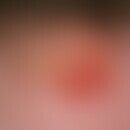Synonym(s)
HistoryThis section has been translated automatically.
Segretain G, 1959
DefinitionThis section has been translated automatically.
Talaromyces marneffei is a dimorphic fungus endemic to Southeast Asia, where it has its natural reservoir in bamboo rats. The fungus causes the most frequent mycosis (AIDS-defining mycosis) in HIV-infected persons and can also be detected in soil samples.
You might also be interested in
Occurrence/EpidemiologyThis section has been translated automatically.
Infections with Talaromyces marneffei occur mainly in northern Thailand, Myanmar, southern China, Vietnam, Laos, Taiwan and Hong Kong in immunocompromised (especially HIV-positive) persons (Chan JF et al. 2016). In Thailand, infection with Talaromyces marneffei is the third most common AIDS-defining disease after tuberculosis and cryptococcosis. The rare cases described in Europe were always imported infections from this region.
ClinicThis section has been translated automatically.
Pathogen detection from the respiratory tract, blood cultures, bone marrow biopsies, skin biopsies, etc.; Talaromyces marneffei can be cultivated on conventional fungal culture media within a few days.
In immunocompetent individuals the infection is clinically inapparent; in children pneumonia can develop. In immunocompromised children the infection can be fatal. In a Southern Chinese collective the mortality rate was 36.36% (Guo J et al. 2019).
In immunocompromised adults, disseminated infection develops with fever, anaemia, weight loss, hepatosplenomegaly, generalised lymphadenopathy and bronchitic symptoms. 70% of infected patients develop a papular exanthema with molluscoid single molluscules. A sweet syndrome was described in a patient with Talaromyces marneffei co-infection with Mycobacterium avium (Su SS et al. 2019). In some cases, abscessing inflammations are also formed.
DiagnosisThis section has been translated automatically.
Pathogen detection from the respiratory tract, blood cultures, bone marrow biopsies, skin biopsies, etc.; Talaromyces marneffei can be cultivated on conventional fungal culture media within a few days.
TherapyThis section has been translated automatically.
Therapy is carried out with Amphotericin B (0.6mg/kgkgKG/day for 2 weeks); then with a triazole antifungal (e.g. itraconazole 200mg p.o. 2x/day for 10 weeks). Secondary prophylaxis with 200mg p.o./day itraconazole should be continued consistently. It can be discontinued with virulogical suppression under cArt until the CD cell count has been reconstituted > 100.
Voriconazole has also been shown to be successful in immunosuppressed children (Guo J et al. 2019).
LiteratureThis section has been translated automatically.
- Chan JF et al (2016) Talaromyces (Penicillium) marneffei infection in non-HIV-infected patients. Emerg Microbes Infect 5:e19.
- Guo J et al (2019) Characteristics and Prognosis of Talaromyces marneffei infection inNon-HIV-infected children in Southern China. Mycopathologia doi: 10.1007/s11046-019-00373-4
- Su SS et al (2019) Disseminated Talaromyces marneffei And Mycobacterium avium Infection Accompanied Sweet's Syndrome In A Patient With Anti-Interferon-γ Autoantibodies: A Case Report. Infect Drug Resist 12:3189-3195.
- Tsang CC et al (2019) Sixty Years from Segretain's Description: What Have We Learned and Should Learn About the Basic Mycology of Talaromyces marneffei? Mycopathologia doi: 10.1007/s11046-019-00395-y.
Incoming links (1)
Aids;Disclaimer
Please ask your physician for a reliable diagnosis. This website is only meant as a reference.




